Healthy eating tips in Lunar New Year food by the Committee on Reduction of Salt and Sugar in Food (with photos)
With the Lunar New Year (LNY) around the corner, a wide variety of festive foods is available in the market. Consumers should pay attention to the sugar, salt (sodium) and fat contents of the food products and choose those with low salt and sugar.
The Working Group on Publicity and Education under the Committee on Reduction of Salt and Sugar in Food (CRSS), established by the Government, together with the Centre for Food Safety (CFS) of the Food and Environmental Hygiene Department conducted a survey on the nutrient contents as listed on the nutrition labels on some prepackaged LNY food before LNY with an aim to encouraging the public to use the information on the nutrition labels to make wise and healthy dietary choice.
The survey focused on four types of LNY food: sweet festive cakes, other festive puddings (e.g. turnip pudding and taro pudding), fried food (e.g. crispy egg floss, crispy triangles and sesame seed balls) and candied food (e.g. candied winter melon and candied lotus seeds).
A spokesman for the CFS said today (January 24), "The survey found that the sugar contents of candied food and sweet festive cakes were generally of high sugar level (i.e. more than 15 grams of sugar per 100 grams of food). Among them, one type of glutinous rice cake with demerara sugar and one type of glutinous rice cake with coconut milk were found to contain more than 40 grams of sugar per 100 grams of food, i.e. the recommended daily intake limit of sugars (i.e. not more than 50 grams of free sugars per day based on a 2 000-kcal diet) will be exceeded upon consuming three pieces (about 150 grams) of the sweet festive cakes . In addition, one type of candied winter melon was found to contain more than 70 grams of sugar per 100 grams of food, i.e. consuming three pieces (about 50 grams) of the candied winter melon will contribute to about 70 per cent of the recommended daily intake limit of sugars."
"Other festive puddings, such as turnip pudding and taro pudding, were found to contain on average around 400 milligrams sodium per 100 grams of food, and none of which were found to contain high sodium content (i.e. more than 600 milligrams of sodium per 100 grams of food)."
Fried LNY food products are generally of high fat (i.e. more than 20 grams of total fat per 100 grams of food) which will contribute to high energy intake. The survey found that some of the fried LNY food products also contained high levels of sugar or sodium. For instance, one type of crispy egg floss and one type of cow ear cookies were found to contain more than 4 600 milligrams and 7 800 milligrams of sodium per 100 grams of food respectively, i.e. the recommended daily intake limit of sodium (i.e. 2 000 milligrams) will be exceeded upon consuming approximately 43 grams of the crispy egg floss or 26 grams of the cow ear cookies. Also, a type of sesame balls was found to contain approximately 57 grams of sugar per 100 grams of food, i.e. the above-mentioned recommended daily intake limit of sugars will be exceeded upon consuming 100 grams of the sesame balls .
The possible nutrient and energy intakes from the festive cakes in the survey were estimated according to the assumption that an adult consumed 150 grams of festive cakes a day. Based on the assumption, it was found that the average intake of sugar from sweet festive cakes and other festive puddings contribute to 86 per cent and seven per cent respectively of the recommended daily intake limit of free sugars (i.e. less than 50 grams), and that consuming 150 grams of sweet festive cakes with the highest sugar content will contribute to around 137 per cent of the recommended daily intake limit of free sugars. As for the average sodium intake and the recommended daily intake limit of sodium (i.e. 2 000 milligrams), the assumed consumption amount will contribute to around one per cent for sweet festive cakes and around 30 per cent for other festive puddings. As for the average energy intake and the recommended daily intake of energy (i.e. 2 000 kcal), the assumed consumption amount will contribute to about 19 per cent for sweet festive cakes and about nine per cent for other festive puddings.
The CRSS reminded members of the public to maintain a balanced diet and avoid excessive consumption of LNY food that are high in energy, sugar, salt or fat during the holiday. People should pay attention to the consumption amount of LNY food as some of them such as candied winter melon and sweet festive cakes contain higher levels of sugar while fried LNY food such as sesame seed balls, crispy triangles and crispy egg floss contain higher levels of total fat.
Consumers are also advised, when buying prepackaged cakes, puddings and snacks, to refer to the nutrition labels on the sugar, salt (sodium) and fat contents, etc., for healthy choices. People could choose low-sugar festive cakes, i.e. containing less than five grams of sugar per 100 grams of food to reduce sugar intake; LNY food with low sodium, i.e. containing less than 120 milligrams of sodium per 100 grams of food to reduce salt intake; and avoid excessive consumption of LNY food with high levels of fat, i.e. containing more than 20 grams of total fat per 100 grams of food.
Members of the public are also advised to avoid excessive consumption of LNY food by sharing the food with their family members and friends and make reference to the following healthy eating tips:
Festive cakes and puddings:
Choose low-sugar sweet festive cakes.
Reheat or cook festive puddings by steaming or using microwave oven.
Do not use or reduce the use of condiments and sauce when eating the puddings.
Use lean pork, dried shrimps and mushrooms instead of preserved meat sausage and preserved meat when making home-made festive puddings.
Fried food:
Choose crispy and relatively low-fat items such as rice crackers and rice cakes as alternatives for fried LNY food.
Candies and snacks:
Choose small and individually packed food items to exercise portion control.
Choose alternatives such as dry-roasted nuts and seeds without added salt and sugar, and dried fruit without added oil, salt or sugar for placing in the assorted snack box.
Please visit the CFS website (www.cfs.gov.hk) for more food safety tips.
Ends/Tuesday, January 24, 2017
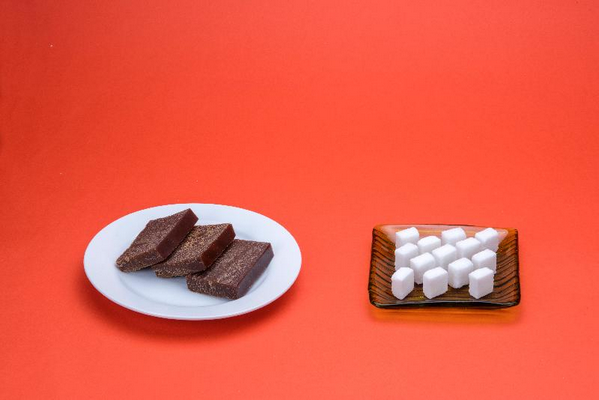
Photo shows the approximate sugar content in around 150 grams of glutinous rice cake with demerara sugar.
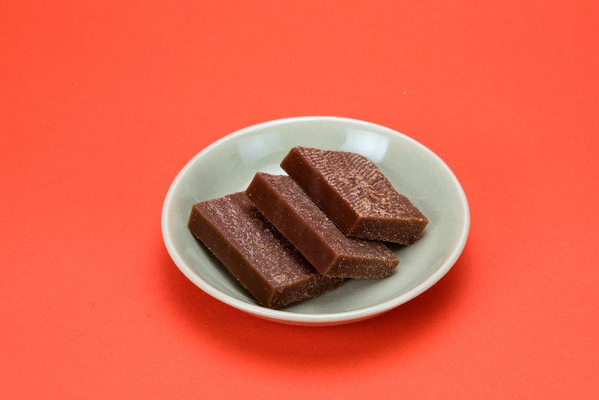
One type of glutinous rice cake with demerara sugar in the picture was found to contain more than 40 grams of sugar per 100 grams of food, i.e. the recommended daily intake limit of sugars will be exceeded upon consuming three pieces (about 150 grams) of the cake.
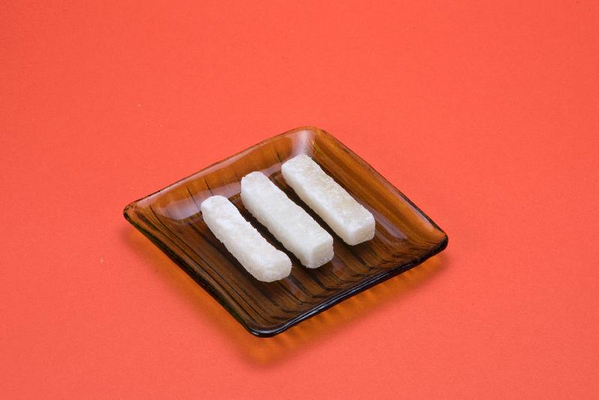
One type of candied winter melon in the picture was found to contain more than 70 grams of sugar per 100 grams of food, i.e. consumption of three pieces (about 50 grams) of the candied winter melon will contribute to about 70 per cent of the recommended daily intake limit of sugars.
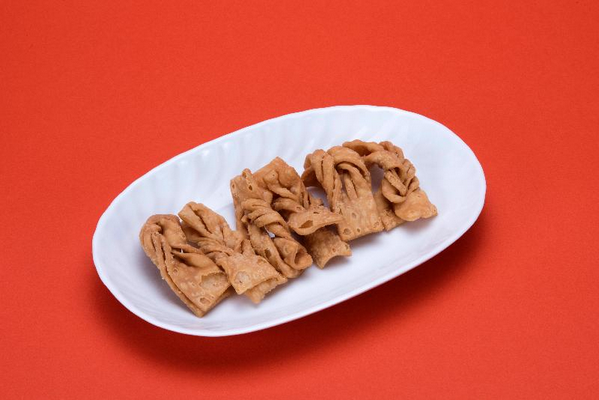
One type of crispy egg floss in the picture was found to contain more than 4600 milligrams per 100 grams, with high level of sodium. The recommended daily intake limit of sodium (i.e. 2000 milligrams) will be exceeded upon consuming approximately 43 grams of the food.
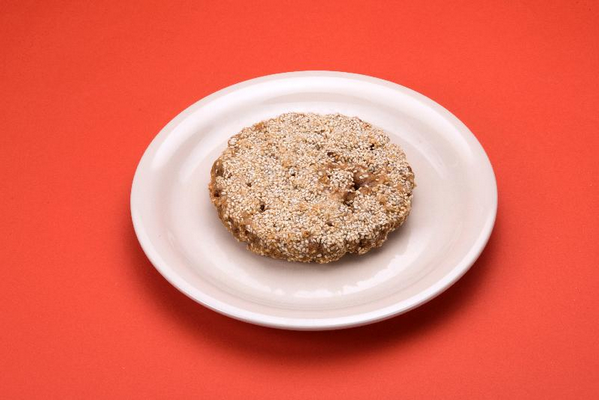
One type of sesame ball in the picture was found to contain approximately 57 grams of sugar per 100 grams of food, i.e. the recommended daily intake limit of sugars will be exceeded upon consuming one piece (about 100 grams) of the sesame balls.